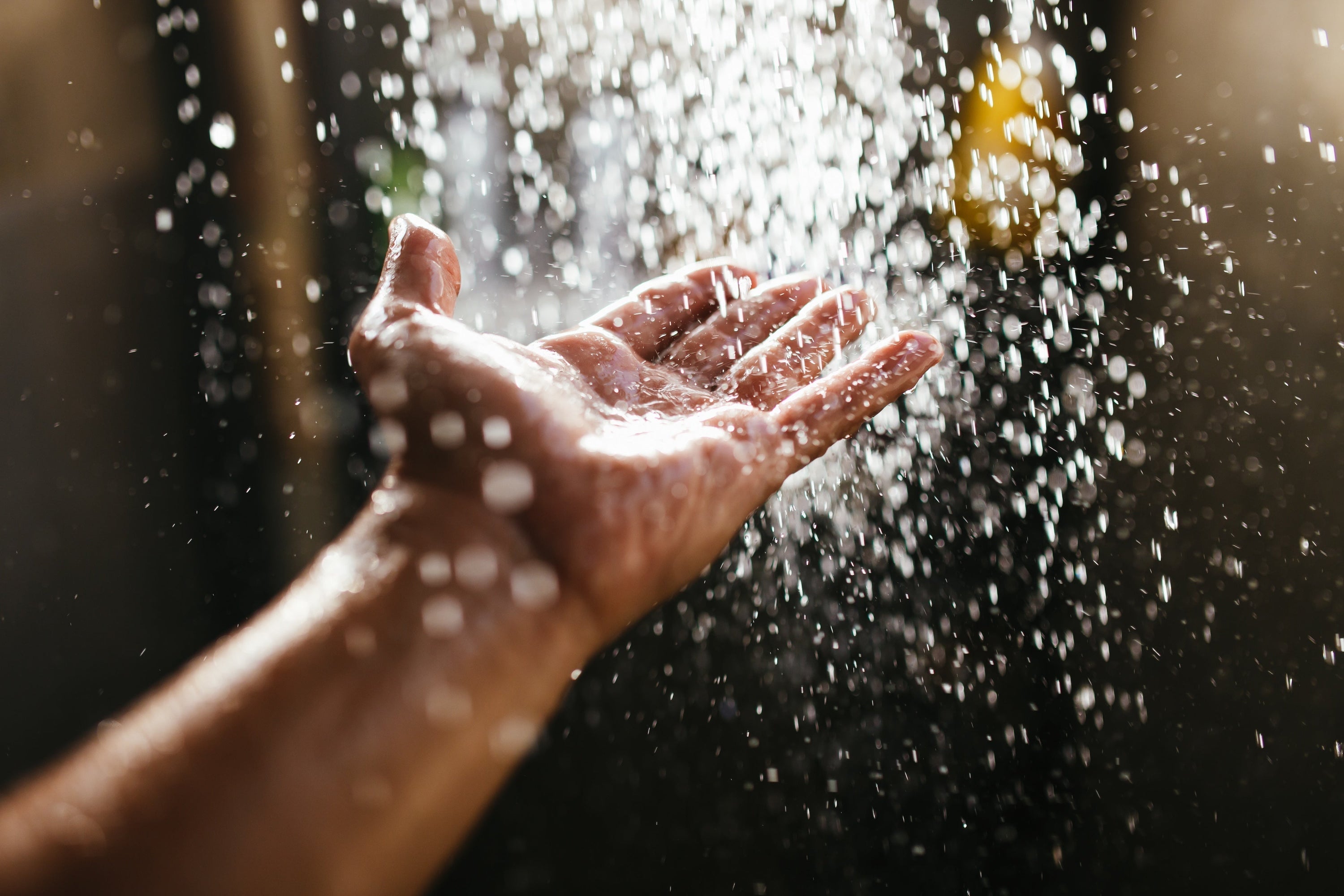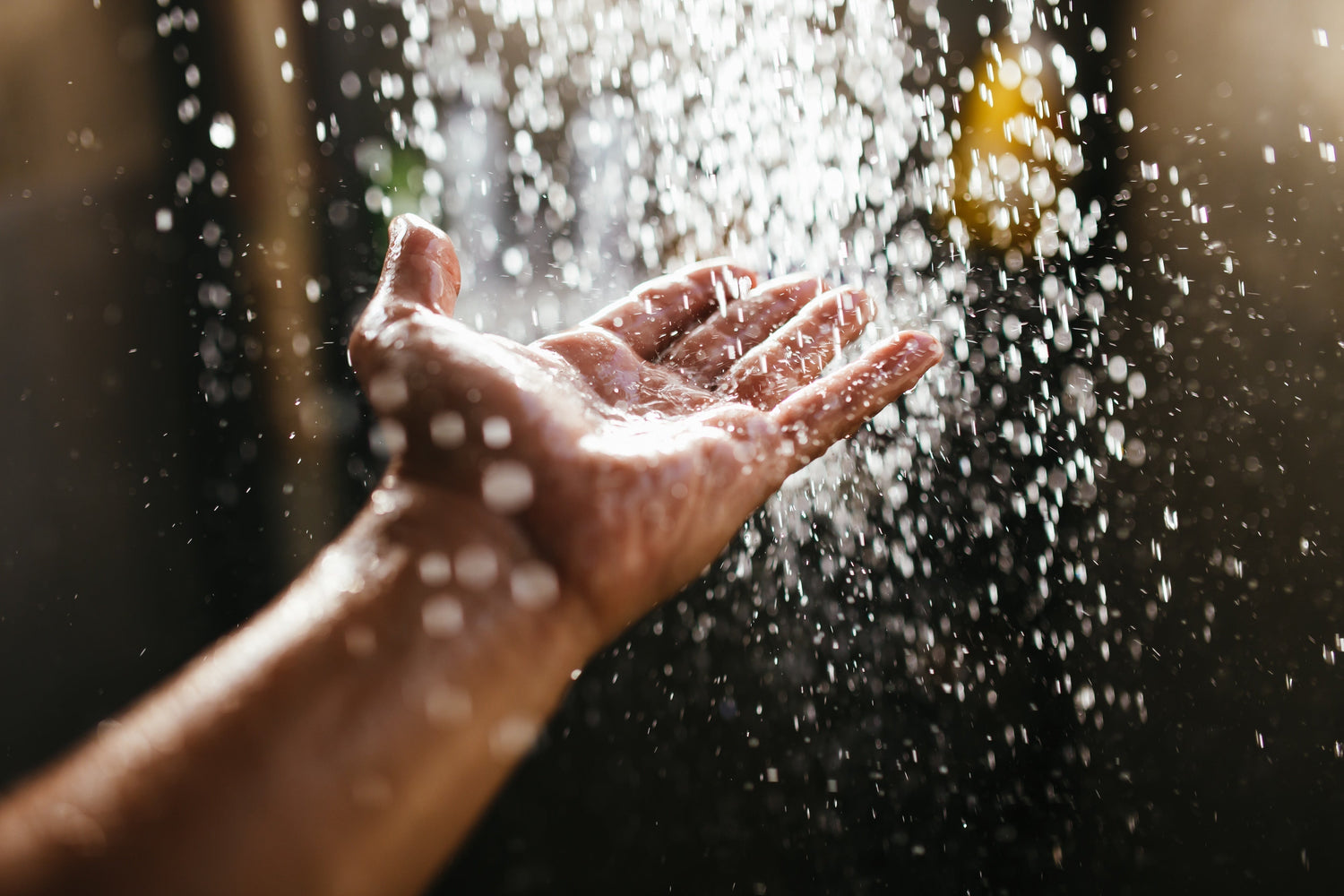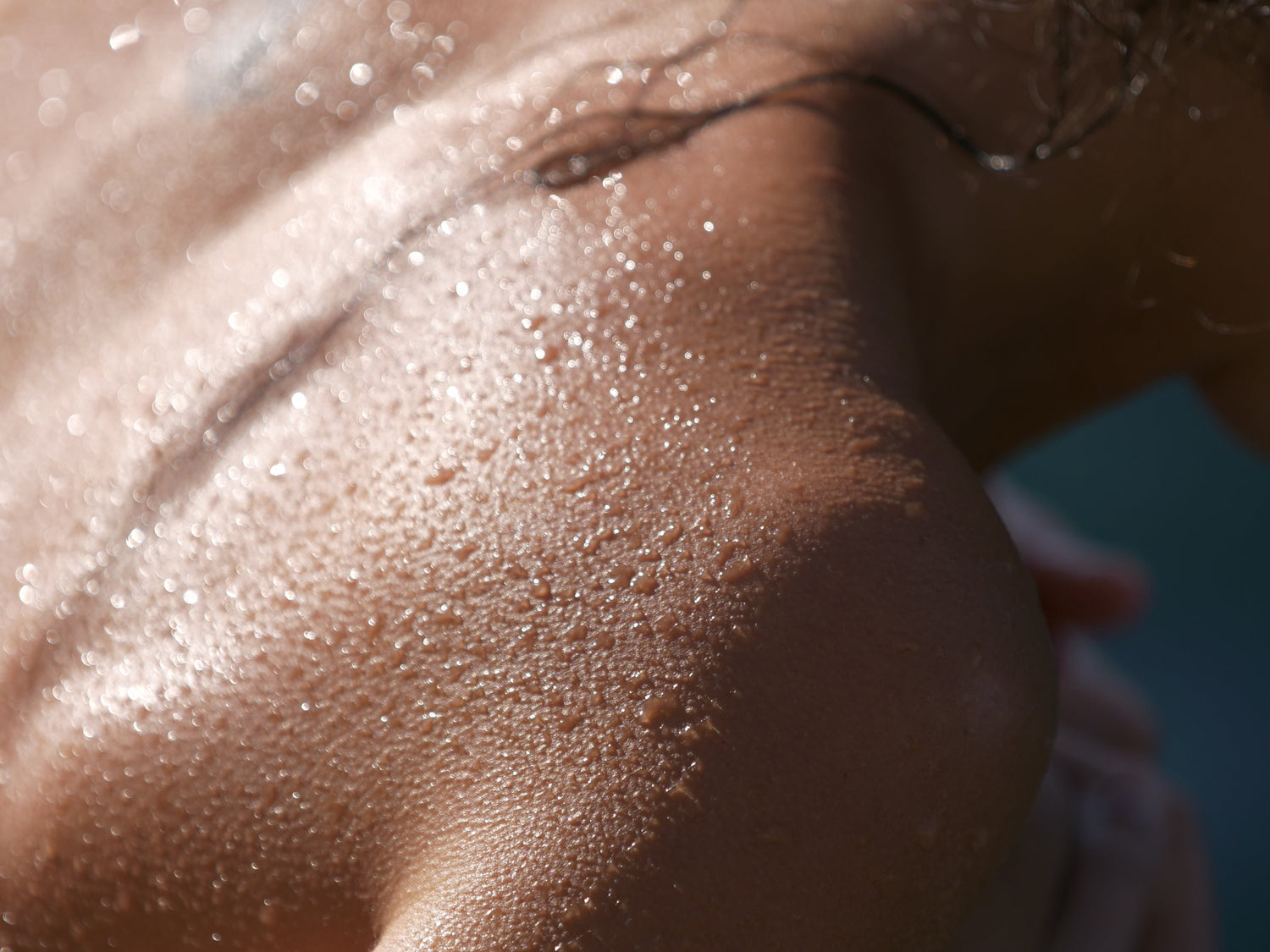Long, steamy showers feel like the height of luxury, where time melts away and worries evaporate under the blast of a hot showerhead. It's a spa-like ritual many people crave. But is hot water actually good for your skin?
According to dermatologists and researchers, hot water may actually strip skin of moisture, weaken its natural protective barrier, and lead to dry, irritated patches. While you don't have to plunge into a cold shower, water temperature matters more than you might think.
Turning the heat down just a little can go a long way in preserving hydration and supporting your skin's natural glow. Here is what you need to know.
What Hot Showers Can Do to Your Skin

As you stand under the superheated shower, contemplating life, have you ever wondered if hot water does more harm than good? The reality is that long-term and repeated exposure to high temperature water (like the kind you step into every day), can damage your skin.
Dermatologists consistently caution against the use of hot water for showers and baths due to its damaging effects on the skin barrier and overall skin health.
So, before you turn the tap to high, consider a few of the long-term outcomes from high temperatures.
Stripping the Skin's Natural Oils
The surface of the skin is made up of several elements, including dead skin cells, sebum (natural oils), and a layer known as the acid mantle. Blasting the skin with hot water gradually dissolves the protective layer of oil, especially in combination with strong soaps and exfoliators.
As one study found, hot water exposure increases moisture loss and skin hydration (known as transdermal water loss). The result is dry, tight-feeling skin, often appearing in hard-to-manage flaky patches.
Appearance of Irritation and Redness
When your skin barrier is compromised and dehydrated, redness follows. This flushing (known as erythema) is caused by dilated capillaries just beneath the surface, and it tends to show up in uneven, patchy areas.
Hot showers and baths dilate blood vessels, increasing the risk of redness and potentially triggering itchiness due to the release of cytokines and histamines, which further aggravate challenging skin conditions.
Patchy red spots are a key indicator of impaired skin barrier function. As several studies have discovered, the higher the temperature, the greater the increase in erythema. People with sensitive skin or conditions like eczema and rosacea may be especially prone to developing irritation and redness related to their hot shower routines.
Damage to the Skin's Protective Barrier
Hand in hand with sebum loss and increased irritation is the overall damage to your skin's protective barrier. The skin barrier is critical to locking in moisture and protecting you against environmental irritants, yet frequent exposure to hot water (like your daily shower) will weaken it.
Hot water may feel soothing, but it can eventually disrupt your skin's natural balance. It can alter the skin's surface pH level, and it disrupts the acidic environment necessary for healthy barrier function.
Over time, hot water strips away the skin's self-made moisturizers and breaks down repair-supporting proteins. All of which leaves your skin more vulnerable to dryness, sensitivity, and environmental stressors.
Does This Rule Apply to Everyone?
If you have dry, sensitive, or eczema-prone skin, extra-hot showers are going to make the issue worse by further weakening your moisture barrier. Older adults (whose skin naturally produces less sebum) are also more prone to hot-shower-triggered roughness, flaking, and persistent dryness.
And if you live in a desert climate or face harsh winter weather, turning down the temperature during bath time becomes even more important to help protect your skin from the added environmental stress of the great outdoors.
The Ideal Bath and Shower Routine for Skin Health

If your go-to routine sets the temperature dial to extreme and relies on a shelf full of harsh cleansers, it's time to take a much gentler (and healthier) approach to daily bathing.
The Right Temperature
If hot, steamy bath and shower routines are out of the question, what is the ideal temperature for your daily cleanse? The best temperature for your next shower isn't scalding hot; it's somewhere between 98°F and 100°F.
Aim for lukewarm water. It should be warm enough that you aren't getting goosebumps, but also cold enough that the bathroom mirror doesn't fog up.
Gentle Cleansing Products
When it comes to your skin, it already has a perfectly protective system built in. Why not help it do its job with gentler products alongside a gentle temperature? It's time to swap out harsh soaps, exfoliants, and heavily fragranced cleansers for pH-balanced, sulfate-free formulas with minimal ingredients.
While occasional, gentle exfoliation can be beneficial for some people, it's essential to remember that your body does naturally shed dead skin cells (at an impressive rate of 30,000 per minute).
But more importantly, dead skin cells actually play a crucial role in your skin's defense. These remnants often work like bricks in a wall. Removing those bricks will break down the barrier, leading to dryness, irritation, and long-term damage.
Keep It Short
Counterintuitively, the longer you linger in a bath or under a showerhead, the drier your skin will become (unless, of course, you lock in moisture afterward). The hotter and longer the exposure, the greater the loss of our skin's natural oils, which leads to dryness, tightness, and sometimes even irritation or itchiness.
While there are no hard rules around duration, many skincare experts recommend a 10-minute shower or a 30-minute bath as a general rule.
Lock in Moisture

If you haven't already thrown a CBD-Infused Bath Gem into the tub, the best time to nourish your skin is right after you towel off. Ideally, you have a luscious body butter within easy reach and applied within two to three minutes. That's when your skin cells are most receptive to hydration.
Our Skin Therapy Ultra-Rich Body Butter is designed to support this exact moment. With ceramide-rich ingredients, including five organic oils and butters, and an aromatic blend of essential oils, it gives your skin exactly what it needs to stay soft and resilient.
A Few Final Words for Context
What's the final answer? Is hot or cold water better for your skin? All of the above information is based on the current scientific understanding, but answers are usually not so black and white (or hot and cold in this context).
For you, your skin, and your body, it's best to think about bathing temperature as a general guideline. There may be times when your body craves that extra-hot shower or a long Epsom salt-infused bath time. After a day of skiing the slopes or when trying to fight off a nasal infection, a steamy bath or shower sounds incredible.
But on most days, try to keep your routine warm, not hot. It's the best way to keep your skin hydrated and maintain a healthy skin barrier and natural glow.
Give Your Skin the Ultimate Indulgence: A Warm (Not Hot) Shower

If daily hot showers have become part of your routine, your skin will begin to show the impact over time. High temperatures can strip away moisture, disrupt the natural barrier, and leave skin dry and irritated.
Warm baths and showers combined with a gentle skincare routine best support your skin's natural defenses to keep it soft, strong, and glowing. By turning down the temperature just a few degrees, keeping it short, and then locking in moisture as you step out of the tub, you can make a big difference.
Disclaimer
The information provided in this content is for general knowledge and educational purposes only and should not be considered medical advice. Our products are not intended to diagnose, treat, cure, or prevent any disease or medical condition. Individual results may vary. Always consult with a qualified healthcare professional before using CBD or any hemp-derived products, especially if you have underlying health conditions, are pregnant or nursing, or are taking prescription medications.





